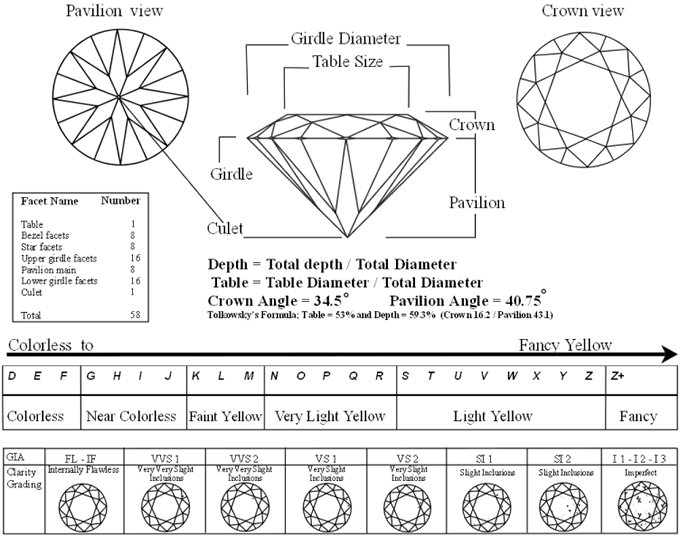Most people are familiar with the Four Cs of Diamonds: Cut, Color, Clarity, and Carat Weight. Those of you who have purchased a diamond from me know I harp on cut more than anything else because the quality of cutting can make or break the Wow Factor of a diamond. But there is an unspoken 5th C to diamonds that often goes overlooked in advertising campaigns, but is critical to the ethical sale of diamonds. A diamond’s certification is the written assurance that a consumer, who is not a trained professional, is buying what a retailer says they are buying.
In the 1940s and 1950s, the Gemological Institute of America (GIA) developed the 4 Cs of Diamonds and laid out the International Diamond Grading System, which is used the world over as the basis for diamond grading. Before that, diamond grading was inconsistent at best, and consumers were often taken advantage of for a diamond being purportedly finer than it actually was.
Nowadays, founded upon the International Diamond Grading System, diamond grading is a complex process combining scientifically measurable characteristics (cut and carat weight) and subjective judgments based on the opinion of trained human perception (color and clarity). Although subjective aspects are included, they are set forth within the parameters of an established, regulated system on a sliding scale that allows for a margin of human error, and is policed en masse by the industry.
Diamonds are certified by gemological laboratories. GIA and the American Gem Society (AGS) are the most respected and trusted establishments in the United States. The understanding within the diamond and jewelry industry is that the subjective aspects of color and clarity can have a variance of plus-or-minus one grade in either direction when graded by different gem labs.
For example, if GIA grades a diamond as a G-color/VS₁-clarity, and AGS grades the same diamond as an H/VS₁, or even an H/VS₂, that is completely acceptable, since the parameters for grading color and clarity are based on observable, but non-measurable criteria.
Diamonds with written certification help uphold and enforce the ethics of the jewelry industry. Consumers of this industry rely on the expertise of professionals as the basis for decisions that can involve large amounts, or even substantial percentages, of a consumer’s money.
Purchasing a diamond offered without written grading reports can be risky if you don’t have a basis for trusting the person from whom you are buying. I always recommend buying diamonds with certificates, but they come with a premium for the assurance. If a customer specifically requests an uncertified diamond, they may save some money. I have my GIA-trained gemologist/AGS-certified appraiser, Tracy, verify the unofficial grade from the diamond vendor on such stones. The whole point is being certain the customer understands and is comfortable with what they are buying (or not buying).
So certification is important. But, alas, not all diamond grading reports are created equal. While Tracy verifies the grade of all diamonds that enter my store to be potentially sold, certified or not, GIA and AGS are the gem labs I trust and rarely, if ever, find discrepancy with. There are other labs, however, whose color and clarity grades I can almost guarantee will not stand up to the scrutiny of my gemologist, let alone official reports from GIA or AGS.
Check back in a few days to read my take on the recent lapse of reputable grading, some stories of laughable diamond grading reports, and why the saturation of poorly graded diamonds has begun to adversely affect the reputation of the industry as a whole.

Diamond Grading Reference Chart
Tags: AGS, Carat Weight, clarity, diamonds, gem, GIA, jewelry industry